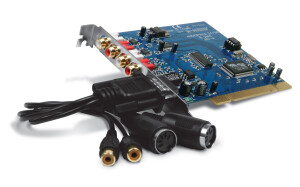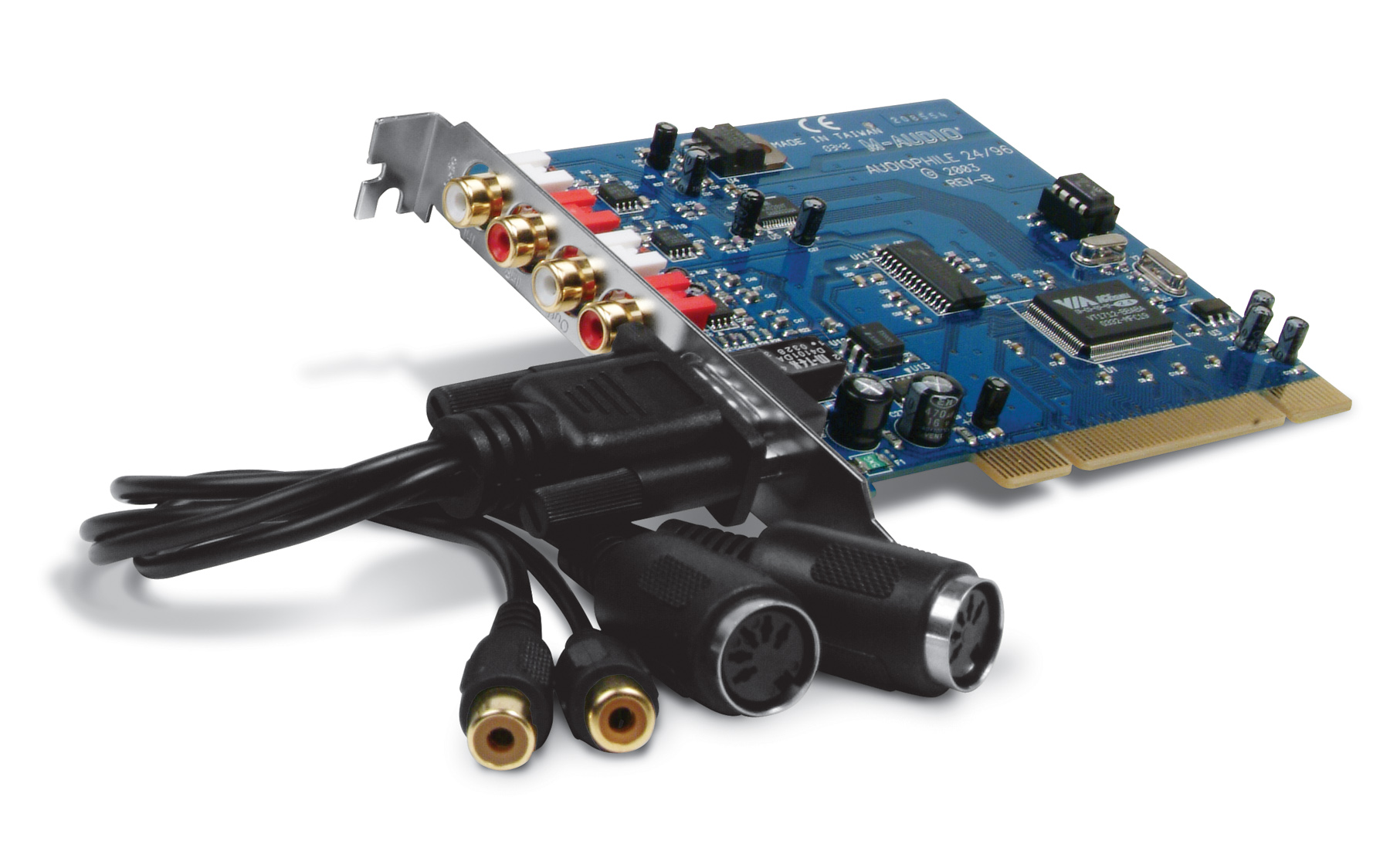View other reviews for this product:
« Indestructible »
Published on 01/21/14 at 21:34
Audience:
Beginners
I bought the first version (I think I remember it is printed Rev. B above but I'm not on) there 15 years with Cubase VST 3 for my Mac G3. She has since gone through a G4 and a PC Athlon and Intel i7-920.
I use
- With my microphone, shure type scene, a wide behringer diaphragm, a pair samson kind overhead through different preamps (Mackie console, preamp tube BlueTube and jackson);
- Synchronized spdif with my POD X3 Live, which allows me to use 4 inputs simultaneously. a single RCA cable to provide for this purpose.
UTILIZATION
Impeccable Driver Integrated mixer absolutely functional. There is a virtual bus "Monitor" that can be transplanted in ASIO. Very handy for software that does not function Export audio. For example Firefox.
In 44.100 kHz and with a buffer of 384 samples, the latency indicated by Cubase is 9683 input and 9342 output. It is very convenient to be able to change at will, it can happen to me to increase the buffer up to 2048 when I use many virtual instruments and effects. I use only the direct monitoring (never by cubase) through my POD multi-effect that is both guitar bass, acoustic or voice.
This is the MIDI that is more difficult when I use a virtual instrument with my keyboard, I have to lower the latency as much as possible and disable the master effects, but it is not a problem unique to this card, all audio systems work like this.
GETTING STARTED
Todo bem. (Everything is fine)
Tiny problem: the drivers are only available in the language of Shakespeare only. This has never bothered me in the least.
OVERALL OPINION
I owned a behringer USB + noise gate which had limited analog integrated. It sounded more flattering than 2496 and dynamics processing was convenient. But she farted after 3 months: LARGE M. ... this brand has a bad reputation but the micro B-2, the PX2000 patch T1950 preamp and have always satisfied me.
I worked for a week with an M-Box Digidesign. The sound is more crystalline and more flattering than the 2496 but it is all in the same price range and latency is higher with USB. I can not say which of the two is more transparent, 2496 amply satisfies me. If I had a choice I'm not sure I prefer the sound of the Digidesign because it is crystal clear and flattering can not always be indicated, depending on the type of production on which bump and that the we want to do the mix.
I highly recommend this card for all types of use, for beginners as well as experts in all situations. The sound is not as flattering as other brands I have tried, but it is not necessarily a fault.
Rather than taking a big sound card, I decided to invest in the rest of my studio (PC overkill, guitars and basses horny sound and touch, microphone choices relatively large, multi-effect pedal for extension of inputs for the map). I do not regret that choice. If one day I need more I / O or that fails, I would reiterate is the same (the driver allows your sequencer see all soundcards as one) or another model of the same brand. However, if I have more money I would turn to Digidesign and Apogee again, but probably I will keep this card in a corner or on the PC, if that reference sound.
It's perfect!
I use
- With my microphone, shure type scene, a wide behringer diaphragm, a pair samson kind overhead through different preamps (Mackie console, preamp tube BlueTube and jackson);
- Synchronized spdif with my POD X3 Live, which allows me to use 4 inputs simultaneously. a single RCA cable to provide for this purpose.
UTILIZATION
Impeccable Driver Integrated mixer absolutely functional. There is a virtual bus "Monitor" that can be transplanted in ASIO. Very handy for software that does not function Export audio. For example Firefox.
In 44.100 kHz and with a buffer of 384 samples, the latency indicated by Cubase is 9683 input and 9342 output. It is very convenient to be able to change at will, it can happen to me to increase the buffer up to 2048 when I use many virtual instruments and effects. I use only the direct monitoring (never by cubase) through my POD multi-effect that is both guitar bass, acoustic or voice.
This is the MIDI that is more difficult when I use a virtual instrument with my keyboard, I have to lower the latency as much as possible and disable the master effects, but it is not a problem unique to this card, all audio systems work like this.
GETTING STARTED
Todo bem. (Everything is fine)
Tiny problem: the drivers are only available in the language of Shakespeare only. This has never bothered me in the least.
OVERALL OPINION
I owned a behringer USB + noise gate which had limited analog integrated. It sounded more flattering than 2496 and dynamics processing was convenient. But she farted after 3 months: LARGE M. ... this brand has a bad reputation but the micro B-2, the PX2000 patch T1950 preamp and have always satisfied me.
I worked for a week with an M-Box Digidesign. The sound is more crystalline and more flattering than the 2496 but it is all in the same price range and latency is higher with USB. I can not say which of the two is more transparent, 2496 amply satisfies me. If I had a choice I'm not sure I prefer the sound of the Digidesign because it is crystal clear and flattering can not always be indicated, depending on the type of production on which bump and that the we want to do the mix.
I highly recommend this card for all types of use, for beginners as well as experts in all situations. The sound is not as flattering as other brands I have tried, but it is not necessarily a fault.
Rather than taking a big sound card, I decided to invest in the rest of my studio (PC overkill, guitars and basses horny sound and touch, microphone choices relatively large, multi-effect pedal for extension of inputs for the map). I do not regret that choice. If one day I need more I / O or that fails, I would reiterate is the same (the driver allows your sequencer see all soundcards as one) or another model of the same brand. However, if I have more money I would turn to Digidesign and Apogee again, but probably I will keep this card in a corner or on the PC, if that reference sound.
It's perfect!




